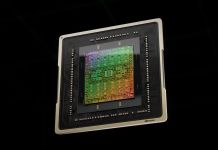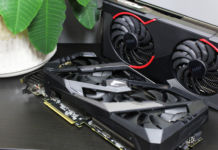ATI has launched the first graphics card sporting GDDR4 memory and Radeon X1950XTX will now carry the weight until the next generation graphics circuits arrive. We’ve taken a closer look at X1950XTX to see how it performs with its new memory technology.
The Radeon X1950XTX is ATI’s newest top-of-the-line graphics card aimed to become the new king of the hill, taking the hill from NVIDIA’s Geforce 7950GX2. Something that might prove to be a challenge as the 7950GX2 has two cores and double memory buses at its end. In part one of the review we will focus on a single graphics card as we are yet to take delivery of a master card. Part two will be completing with a multi GPU review.
The X1950XTX comes with two new features, a new cooler and new memory. Is the new cooler as good as it looks? Stay tuned as we take a closer look at both and check out how increased memory bandwidth really will affect the performance. Earlier overclocking tests have shown that it’s precisely what the R580, and not least Crossfire, needs.
When ATI was about to launch its X1950XTX, it invited the press to a conference in Berlin. The highlight of the agenda was Joe Macri’s presentation of GDDR4. We received information and were enlightened that Joe Macri is a rarely seen guy you don’t want to miss. Joe Macri is simply an ATI coworker that also sits on the JEDEC board of directors. The day before the conference we, a couple of editors and ATI employees, decided to head out in the night of Berlin to get some food and drink a few beers. It didn’t take long before we all understood that Joe Macri is truly passionate about his work. As soon as he gets a question he expands it and replies with a very simple answer, sometimes it got a bit spooky considering how well he can articulate himself without having anything prepared. He also has a special ability to make everything sound very simple. I don’t think I’ve ever heard so many metaphors spoken at the same table as when Joe Macri tells ”the story of GDDR4” at a small restaurant on Fredichstrasse in Berlin. Unfortunately the story is way too long for us to be able to present it here, but we can at least start with telling you that GDDR4 has been the goal they set up five years ago, when they first started developing GDDR.
The fundamental changes that have been made since GDDR3 are reducing the VDD noise (voltage) and optimized the signals in general. They’ve also created something called Double Pumped Address Bus. A new technology that makes it possible for GDDR4 to use only half as many physical connections (pins, or balls) to communicate. The now available connections are instead use for power which opens up the possibility for higher speeds. DPAB in itself also contributes to a slightly reduced power consumption. In other words, the goal has been to deliver faster memories with lower power consumption. GDDR4 brings about 30% lower consumption than GDDR3 at the same frequency. Something they’ve been able to achieve thanks to a number of improvements of the communication and power consumption.
The chip used with our X1950XTX are made by Samsung and ranked at 0.90ns. They use 1.9V which is slightly lower than what we’ve seen with 1.1ns ranked GDDR3. The first tests show that the memory overclocks divinely at default voltage. 1143MHz (2286MHz DDR) is achieved without any fuss. Unfortunately we can’t set the frequency any higher with the overclocking tools that are available today. We hope that Mikael at TPU, the creator of ATItool, will solve this problem soon so that we can really test the potential of these memories.
We will continue with testing the memories’ efficiency relative the GPU on the next page.
We’ve chosen to use 3DMark 05 to test the importance of the memory bandwidth. We’ve also chosen to focus on game test 3 (canyon flight) since it is the test the most dependent on the graphics card. We start by running 3DMark 05 at the default resolution – 1024×768. We’ve clocked the memory at X1950XTX to X1900XTX and then overclocked it to X1950XTX to see how much the bandwidth matters.
As expected the X1950XTX is a bit slower than X1900XTX at the same frequency. This is because the latencies are not as aggressive with GDDR4 as GDDR3. We continue with higher resolutions where the memory bandwidth becomes more crucial.
Oddly, we there’s no real difference when using higher resolutions, which most likely means that the memory bandwidth is enough to supply the GPU with data. We therefore overclock the GPU to 750MHz to see how high percentage increase we get at a 775MHz and 1000MHz memory frequency.
Just as expected we can see that the total performance increase in a linear with the memory bandwidth, some that bodes well before our coming CrossFire tests and world record attempts.
ATI received a lot of criticism regarding the cooler found on X1900. The design of the cooler was a big mistake by placing a relatively small fan close to back of the chassis. If you place the fan further in the sound is dampened, pretty obvious. The placement of the fan close to the fan grid created whining noise that many, including yours truly, found annoying.
But as the result was far from satisfactory – ATI called for a do-over. And this time ATI has chosen to go with a completely new design where it has placed a larger fan as far inside the case as possible. Thus the noise of the fan and fast moving air will not be as easy to notice. ATI has also increased the surface and weight of the cooler judging from the pure mass. To spread the heat more efficiently it has chosen to equip the cooler with a heatpipe that transports the heat out to the more remote parts of the cooler. It has also spent many hours designing the fan and made advanced tests to optimize the air flow relative to the noise.
Another great improvement is the separate memory and GPU cooling. The memory is also equipped with a more traditional massive heatsink that also cool an eventual Crossfire chip. The memory is therefore cooled by the airflow inside the case and can rely on a lower rpm of the graphics card’s fan. The look of the cooler is quite luscious with its clear and red acrylic plastic. Unfortunately we don’t have any equipment for testing the noise available but it is pretty easy to tell that ATI has succeeded with the level of noise. Even during 3D load it’s hard to hear the fan.
We continue on the next page with the specifications of the card and more pictures.
X1950XTX house the same GPU as X1900XTX, more precise the transistor-giant R580. Even if X1950XTX is code-named R580Plus which implies a change of the architecture this is not the case, if you neglect the GDDR4 updated memory controller. R580 is big but also a very powerful GPU which together with the improved bandwidth makes X1950XTX the most powerful single-GPU graphics card available on the market.
Below we’ve listed the most important specifications for X1950XTX. It’s worth mentioning that the RAMDAC supports 10-bit colors all the way through the pipe, something ATI is the sole company to offer and results in a dramatic improvement of the color ratios when e.g. watching movies with the right TV.
 |
|
| Code-name: | R580+ |
| Manufacturing process: | 90nm |
| Transistors: | ~384 million |
| Interface: | Native PCI-Ex 16x |
| Pixel shaders: | 48 |
| Vertex shaders: | 8 |
| Rendering support: | DirectX 9.0, OpenGL 2.0 |
| Shader Model: | 3.0 |
| Image properties : | HDR+AA, Angeld-AF |
| GPU frequency (MHz): | 650 |
| Memory interface: | 256-bit (up to 512-bit internally) |
| Buffer size: | 512MB |
| Memory frequency (MHz): | 1000/2000 (DDR) |
| Memory bandwidth (GB/s) | 64 |
| RAMDAC: | 400MHz 10bit |
| Cooling system : | Dual-slot |
| Standard outputs | 2x Dual-link DVI (HDCP), 1x VIVO |
| Price: | $449 |
Graphics card comparison |
||||||
| X1950XTX | X1950 Crossfire | X1900XTX | X1900 Crossfire | X1900XT | X1800XT | |
| Code-name: | R580+ | R580+ | R580 | R580 | R580 | R520 |
| Manufacturing process : | 90nm | 90nm | 90nm | 90nm | 90nm | 90nm |
| Memory: | GDDR4 0.9ns | GDDR4 0.9ns | GDDR3 1.1ns | GDDR3 1.2ns | GDDR3 1.2ns | GDDR3 1.2ns |
| Transistors: | ~384 million | ~384 million | ~384 million | ~384 million | ~384 million | ~320 million |
| Pixel shaders | 48 | 48 | 48 | 48 | 48 | 16 |
| Vertex shaders: | 8 | 8 | 8 | 8 | 8 | 8 |
| Frequency (core): | 650MHz | 650MHz | 650MHz | 625MHz | 625MHz | 625MHz |
| Frequency (memory): | 2000MHz | 2000MHz | 1550MHz | 1450MHz | 1450MHz | 1500MHz |
We continue with taking a look at our test system.
| |
Test system | |
| Hardware | |
| Motherboard | ASUS P5W DH |
| Processor | Intel Core 2 Extreme X6800 |
| Memory | Corsair PC6400C3 2x1024MB (d9) |
| Harddrive | WD Raptor 36GB 10 000 RPM |
| Monitor | Dell UltraSharp 2405FPW |
| Graphics card | ATI Radeon X1950XTX 512MB ASUS GeForce 7950GX2 1024MB Gainward GeForce 7900GTX Bliss 512MB ATI Radeon X1900XTX 512MB |
| Power supply | Cooltek 600W |
| Software | |
| Operating system | Windows XP (SP2) |
| Drivers | Catalyst 6.8 |
| Monitoring program | Fraps 2.5.3 |
| Benchmark programs |
3DMark05 (1.2.0) |
We will introduce a new test system with this review, a natural shift that will increase the overall system performance significantly. This is a great advantage as we eliminate eventual bottlenecks that could compromise the results from the game tests.
We also have a few new games; Oblivion and Tomb Raider: Legend, which both are graphically very impressive. Tomb Raider: Legend with ”Next Gen” activated may very well be the most demanding game of today. In part 2 we might be able to include Prey which is based on the same engine as Doom 3 and Quake 4.
In our tests we will use both high resolutions and high image quality settings, simply because the high-end graphics cards we’re looking at today are suppose to be used like this.
We start with Quake 4.
Quake 4 is built upon the Doom 3 engine and has always favored NVIDIA graphics cards. GeForce 7950GX2 displays the best performance but as we can see with the results from the 7900GTX and X1900XTX, ATI has made some significant improvement with the last couple of versions of Catalyst. At 1920×1200 7900GTX is left far behind.
Next game in line is Elder Scrolls: Oblivion.
Oblivion is the latest game of the Elder Scrolls series and offers very impressive graphics in the form of a role-playing game with big outside scenes. 7950GX2 is the leader in performance with relatively small margin. Both X1950 and X1900 performs better than 7900GTX with a good margin.
Moving on to F.E.A.R.
| Setting: | Value: |
| Soft Shadows | Off |
F.E.A.R is one of the most demanding games available today. The system only becomes a small bottle neck which makes F.E.A.R the best game test for graphics cards. Therefore we can clearly see how 7950GX2 in Quad-SLI leaves the competition far behind. But also how 7950GX2 and 7900GT performs very similar, since the system isn’t at 100% load and there is still power left for the SLI handling with 7900GT (the difference shown is only because of different frequencies).
Next up is Tomb Raider: Legend.
| Setting: | Value: |
| Next Gen | On |
The freshman among our game tests is a game starring Lara Croft; Tom Raider: Legend. This is a game with high requirements that contains numerous fresh rendering technologies. Here the entire system, including the graphics card, plays in. With Next Gen and HDR activated it is one of the most demanding games today. The game has been developed together with NVIDIA but with 7950GX2 we notice a problem where it feels like the game for an extremely short period of time start to stutter. With higher resolution we can see that X1950XTX once again shows what its worth.
We finish our game tests with Half Life 2: Lost Coast.
| Setting: | Value: |
| Next Gen | On |
Half Life 2 with its source engine has turned out to be very flexible when it comes to alterations and implementing new technologies. The fact is that the source engine supports HDR+AA no matter what DX9 graphics card you’re using. You can thus use HDR even with NVIDIA graphics cards in Half Life 2. 7950GX2 tar brings home the victory with a small margin. Among the single-GPU cards X1950XTX has a clear advantage.
We continue by taking a look at the image quality.
Image quality is something that is more important to consumers than ever before. HD is a term that pops up wherever you turn basically, above all the television. But when we’re talking about HD with PC games it is a matter of extreme HD, 1900×1200 or 2560×1600. This also includes technologies image improving technologies such as AA and AF but not the least HDR – High Dynamic Range (Lighting).
HDR is used to create realistic light sources with astonishing results on the environment and is used by e.g. Oblivion and Tomb Raider: Legend. A problem that has occurred for NVIDIA is that its graphics cards can’t render HDR at the same time as AA is activated. Something that has a horrible effect on the image quality. At some occasions we heard that this was according to the design but why should one technology exclude another already given. ATI with its X1000 series on the other hand has full support for HDR+AA. The movie displays a clear example with Oblivion.
– Download HDR+AA in Oblivion (90MB)
Another big advantage ATI has over Nvidia is Ansio. Filtering of angled textures. The movie below displays an example of this with Half Life 2.
– Download Ansio. Filtering in an angle (76MB)
We haven’t been able to record our own videos so we’ve chosen to use the movies recorded by ATI. Do note that we have been supplied with ”save games” for the games to be able to verify the sequences.
We continue by taking a look at the overclocking potential of X1950XTX.
It’s no news that overclocking has become something for the everyday-user. Many graphics card partners even sell cards that are overclocked from factory, something that has more or less become a given with some partners or even their special niche. This is mainly with Nvidia-based graphics card but X1950XTX has all the potential to create the same trend at ATI partners because there is plenty of room for overclocking. The core of X1950 has in our tests been overclocking better than X1900 and the graphics card is fitted with a better cooler. The memory is where the most can happen as 1100MHz should be foolproof from factory.
Overclocking for use in a regular PC seven days a week is good with X1950XTX, you can expect up to 700MHz core (somewhat higher rpm with the fan than default) and 1100MHz memory completely stable. When it comes to extreme overclocking uses negative Celsius the future is more uncertain. X1950XTX has just as X1900XTX a tendency to coldbug (not work at low temperatures). The temperature for the coldbug varies between -20°C to -120°C. What the real cause of this is is still to be revealed but you can move around this by modifying the voltage the hard way. We’ve tested ourselves and heard from others that you can’t boot at colder than -40°C with X1950XTX, but when you’ve in Windows and all of the drivers have been loaded and the voltage is turned up you can lower the temperature further. So the coldbug itself is not a big problem as you can move around it.
Another frustrating problem is that there are not competent overclocking tools for X1950XTX. It took W1zzard, who develops the program ATItool, a very long time to make the algorithm for core and above all memory with X1900XTX. Now he has to do the same with GDDR4 as the programs ATI has to offer doesn’t work as well. Therefore we have no results during extreme cold to offer. We have instead set up a goal of 16 000 points with 3DMark 05 completely air cooled with one graphics card – with one core. Graphics card with stock cooler and the processor with a Sunbeam Tunic Tower 120 (120mm 200cfm fan).
After tao days we were close, but still not there. We kept our cool and continued with spending many hours optimizing and tried to squeeze every possible MHz from the system to reach our goal. On the last hour of the third day we succeeded. It costs a bit of a head ache but it was definitely worth it to see that six after the one instead of that damn annoying five.
That’s all the overclocking we have to offer in part 1. In part 2 we will overclock with Crossfire and will hopefully be able to present one or two world records.
ATI has done a really great job with its latest addition to the graphics card market and it is really just one detail that stops the card from being the fastest card today, its performance. Radeon X1950 XTX is without a doubt the fastest single-GPU graphics card on the market but as our tests have shown it is still NVIDIA that has the ”fastest graphics card” in the form of GeForce 7950GX2. The performance is of course one of the most essential parts of a graphics card and if you would only focus on the FPS NVIDIA’s monster card would be hard to beat. Unfortunately its dual-GPU architecture has appeared to be far from fault-proof and it’s not just Quad-SLI systems but also systems with only one GeForce 7950GX2 card have displayed compatibility issues. Our own test system did not work satisfactory with GeForce 7950GX2 to begin with and we needed a fix for our Intel 975-based motherboard to make NVIDIA’s graphics card perform as it should. Compatibility problems and worse image quality when compared to ATI’s new graphics card series therefore puts NVIDIA’s flagship to shame. ATI has no compatibility problems with its X1950/X1900 series as far as we know and after struggling with GeForce 7950GX2 for a long time we know how annoying this can be. At the same time we should tell you that NVIDIA’s flagship is really nice when it works as it is suppose to.
What is perhaps the biggest advantage of Radeon X1950 XTX is ATI’s aggressive price. $449 can hardly be considered cheap, but considering what a new high-end graphics card costs it actually quite affordable. X1950 XTX can be preordered already at $449 while NVIDIA’s GeForce 7950GX2 costs about $550, a quite big difference. In out tests Radeon X1950 XTX shows that the closest single-GPU graphics card from NVIDIA, GeForce 7900GTX, is no match when it comes to the performance, even though NVIDIA’s is just a few tens cheaper.
Radeon X1950 XTX is very much alike its predecessor but what ATI has improved has really paid off. The new cooler is a big step forward and the GDDR4 technology adds a significant performance advantage in most situations, which we presume will only become bigger when we test X1950 Crossfire. X1950 XTX is not a revolutionizing graphics card but gives a very mature impression. But alas, there are pieces missing from the puzzle and the most important piece is, once again, the availability. Radeon X1950 XTX is expected to appear in stores next month and if NVIDIA, e.g. lowers its prices or makes a similar move ATI will have a hard time winning the battle of the customers’ money. For enthusiasts it’s a shame that there are no real overclocking tools available for those who want to push ATI’s flagship as far as possible, but this will hopefully be fixed as soon as the cards arrive in stores. ATI’s built-in Overdrive works, but is quite limiting. The overclocking potential is still top notch, we’ve seen it.
Overall ATI has improved an already good graphics card and if it will be able to meet the demand while keeping its low prices Radeon X1950XTX can look forward to a very bright future. At the same time we’re very excited to see what the X1950 architecture with its GDDR4 memory can do in a Crossfire configuration, we will return very soon with more information.
 | |
ATI Radeon X1950XTX | |
|
Pros:
Cons: | |
Finally we would like to thank ATI, ASUS and Gainward for supplying graphics cards and motherboard for this review.









































Leave a Reply